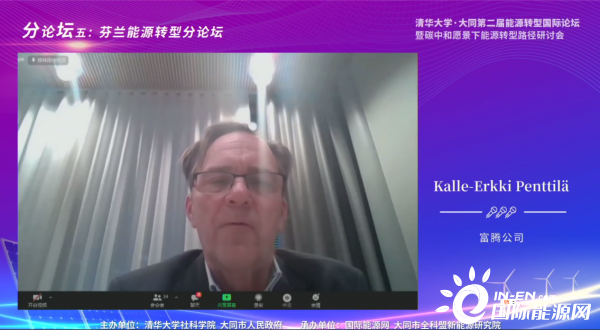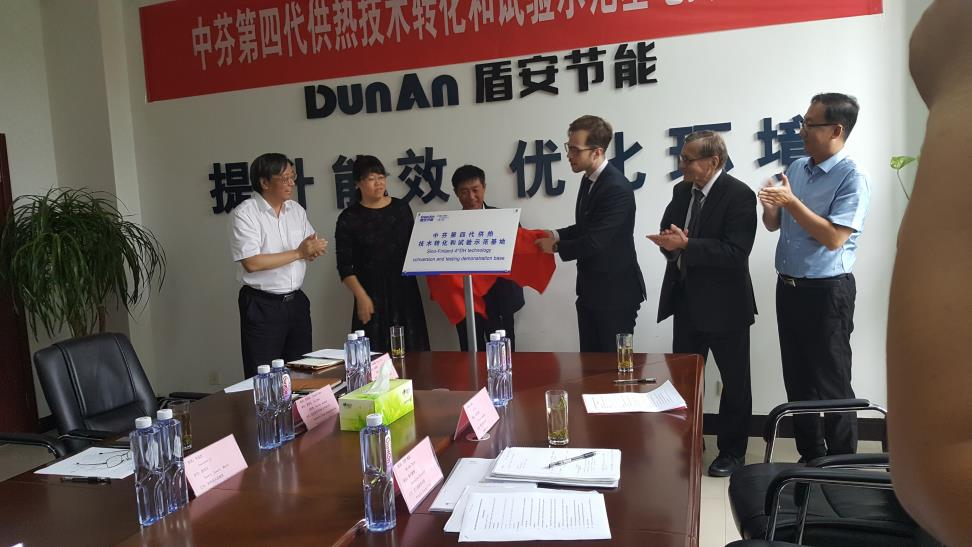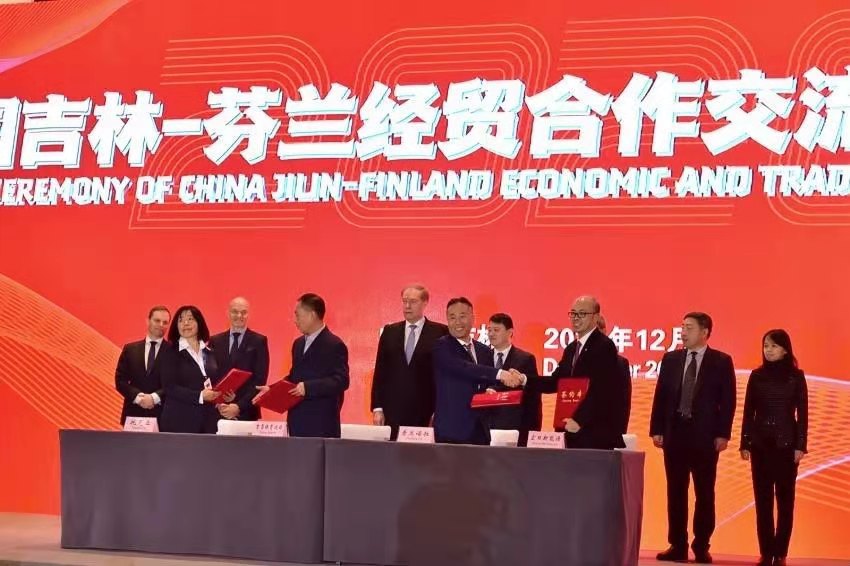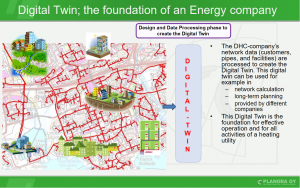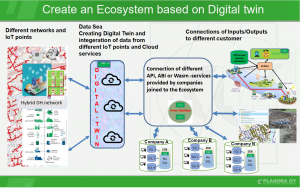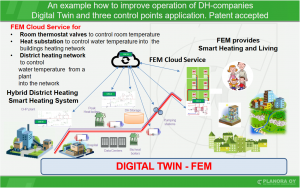Mr Yu Li from Planora gives a speech about Smart energy system works in Finland with digital twin technology.
Planora的Yu Li先生就数字孪生技术在芬兰的智能能源系统中是如何运作发表了演讲。
The data of the heating network is composed of off line(static) data and online(dynamic) data, The basic data of the digital twin is static data based on the network data when its completed. We can integrate the existing IOT points on the network into the existing digital twin to achieve a complete digital twin that combines dynamic data and static data。
供热网络的数据是由离线数据和在线数据所构成, 数字孪生的基础数据是基于网络的静态数据所构成的。这些静态数据包括了供热网络的用户,热网,以及不同的热源,在完成数字孪生的创建以后,我们可以把网络上已有的数据传输点集成到现有的数字孪生上,达到动态数据和静态数据相结合的数字孪生模型。
An eco system can be created based on Digital twin, the purpose of this eco system is to simplify the data sharing between different companies. all the encrypted network data will be stored is the data sea which includes all the static data and dynamic data. company can access to this data sea through different API service for their own purpose.
可以基于Digital twin创建一个生态系统,该生态系统的目的是简化不同公司之间的数据共享。 所有网络数据将被存储在数据海中,其中包括所有已加密的静态数据和动态数据。 公e司可以出于自己的目的通过不同的API服务访问此数据海。
Digital Twin and three control points application is the optimum way to control a district heating system, it allow the system to match the heat production with heat demand which greatly reduce energy fluctuations, data from room thermal stats and substation is transmitted to cloud service, the supply temperature of substation will be controlled automatically according to the actual room temperature. This approach allows the heating network to respond to the actual heat demand of users from the supply side。
数字孪生和三个控制点的应用是控制区域供热系统的最佳方法,它使系统将热量产生与热量需求相匹配,从而大大减少了能源波动,来自房间温度统计数据和变电站的数据被传输到云服务,变电站的供电温度将根据实际室温自动控制。这种方法允许加热网络从供应侧响应用户的实际热量需求。
Presentation 27.01.2021 Link for Presentation in English
Planora presentation 27.01.2021 CHN 中文版PPT链接
